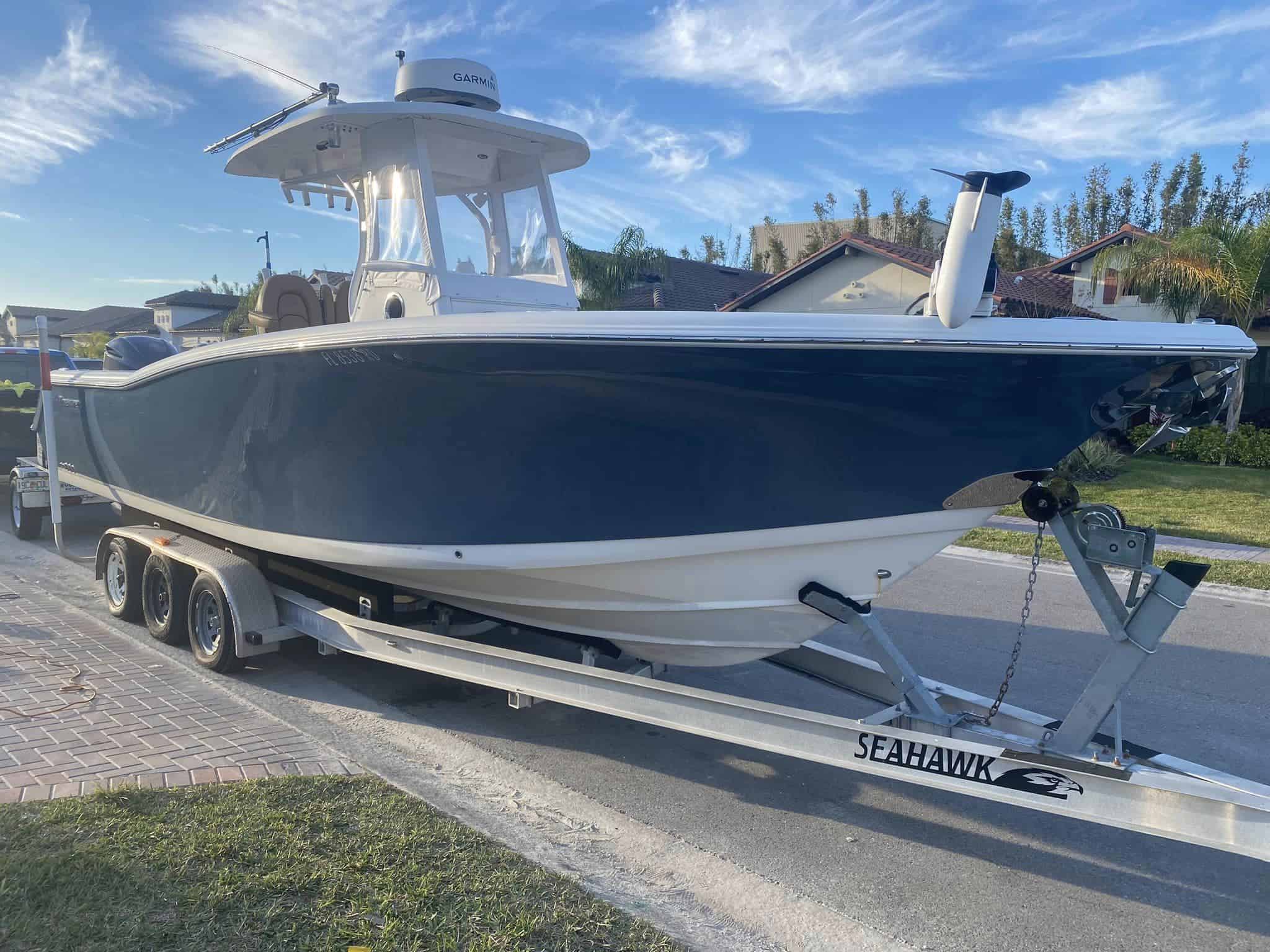13 Sep The Most Overlooked Details When Detailing a Boat
Boat detailing is essential to maintaining the value, appearance, and longevity of your vessel. While most boat owners focus on the obvious—polishing the hull, cleaning the deck, and shining the chrome—there are several often-overlooked details that can make a huge difference in the overall condition of your boat. Paying attention to these smaller aspects can protect your investment and keep your boat in prime condition.
Here are some of the most commonly overlooked details when detailing a boat:
1. Undersides of Hatches and Compartments
Hatches and compartments are frequently used and exposed to moisture, saltwater, and dirt. Most boat owners clean the tops, but the undersides are often neglected. These areas are prone to:
- Mildew and mold growth from trapped moisture.
- Salt build-up, which can corrode hinges and latches.
Cleaning these areas thoroughly and applying a water-repellent treatment can prevent damage over time.
2. Bilge Area
The bilge is one of the dirtiest and least glamorous parts of a boat, but it’s vital for the vessel’s functionality. Ignoring the bilge can lead to:
- The accumulation of oil, grease, and debris, causing foul odors.
- Reduced efficiency of the bilge pump due to blockages.
A regular cleaning routine and the use of bilge cleaners will help keep this critical area in top shape.
3. Canvas and Upholstery
While the deck and hull get most of the attention, boat canvas and upholstery are often forgotten or not cleaned properly. Salt, UV rays, and general wear and tear can degrade these materials quickly if they are not maintained:
- Use fabric protectants that offer UV protection.
- Clean and condition vinyl and leather surfaces to prevent cracking and fading.
- Remove canvas covers periodically to clean and check for mildew, zippers, and stitching.
4. Metal Fittings and Hardware
Although most boat owners polish the more prominent chrome and stainless steel parts, smaller metal fittings such as cleats, railings, and screws can be overlooked. These areas are often exposed to saltwater and can rust or corrode if neglected:
- Use a specialized metal polish and rust inhibitor.
- Regularly inspect small parts for signs of corrosion and replace them if necessary.
5. Caulking and Sealants
The caulking around windows, hatches, and fittings is essential for keeping water out. Over time, sealants can degrade and lose their effectiveness:
- Inspect the caulking for cracks or wear and reapply marine-grade sealant as needed.
- Pay special attention to areas prone to leaks, like the transom and around through-hull fittings.
6. Rub Rails
Rub rails are designed to protect the hull when docking but often bear the brunt of impacts, leaving them scuffed and dirty. Many boat owners forget to:
- Clean rub rails regularly to remove marks and salt build-up.
- Polish them with specialized products to restore shine and prevent degradation.
7. Navigation and Safety Equipment
While safety equipment may not seem like part of the detailing process, keeping these items clean and maintained is crucial. Ensure that navigation lights, fire extinguishers, life vests, and other safety gear are:
- Clean and free from salt deposits and grime.
- Inspected for functionality and replaced as needed.
8. Gelcoat Maintenance
Gelcoat is the glossy outer layer of your boat’s fiberglass. While many boat owners will give it a quick polish, ongoing maintenance is often neglected:
- Apply a UV protectant to prevent oxidation and fading.
- Buff out minor scratches or scuffs to maintain a smooth surface.
- Use a high-quality wax to protect the gelcoat from future damage.
9. Storage Areas
Storage lockers and compartments are often used to stash gear and equipment, but they can also trap moisture, dirt, and odors. To avoid problems:
- Regularly empty storage areas and clean them thoroughly.
- Dry them completely to avoid mold and mildew growth.
10. Windshields and Clear Plastics
Windshields, instrument panels, and other clear plastic surfaces can become cloudy or scratched over time. These areas are often overlooked when detailing, but they impact visibility and aesthetics:
- Use a plastic cleaner and polish to maintain clarity.
- Avoid harsh chemicals that can damage or scratch plastic surfaces.
Detailing a boat isn’t just about making it look good for a day on the water—it’s about maintaining its functionality and protecting it from the harsh marine environment. Regular care and attention to detail will go a long way in preserving your vessel for years to come.


Sorry, the comment form is closed at this time.